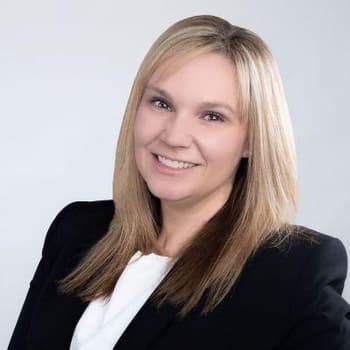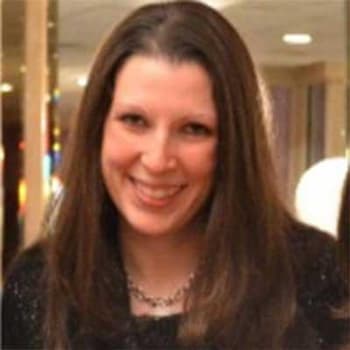Claustrophobia is an anxiety disorder that involves an irrational fear of small spaces with no mechanism of escape. Individuals with claustrophobia may avoid small spaces at all costs to evade emotional and psychological distress.
An individual suffering from extreme levels of anxiety is at risk for developing a phobia, or a powerful and irrational fear of specific items or situations. The term claustrophobia derives from the Latin word claustrum, meaning a closed-in place and from the Greek word phobos, meaning fear. People with claustrophobia have an illogical fear of being enclosed in small spaces with no means of escape. Individuals with claustrophobia may avoid small spaces to avoid triggers that result in intense anxiety or panic.
Individuals may be fearful of what could happen in the confined space instead of the actual space itself. People are often fearful of constraint, being trapped and being unable to breathe. The figurative phrase, “the walls are closing in,” signifies feelings of being cornered, frightened or ill-fated, which can be related to how a person with claustrophobia feels.
What is Claustrophobia?
Claustrophobia is a type ofanxiety disorder, categorized as a specific phobia in the Diagnostic and Statistical Manual 5 (DSM 5). Individuals with claustrophobia may veer away from small areas that trigger fright and worry, and the severity of the phobia will determine how a person classifies a small space. Individuals with an extreme phobia may view seemingly large spaces as problematic, whereas people with a less extreme phobia may have a more accurate perception of smaller spaces. Claustrophobia is a common condition that can either dissipate on its own or may requireprofessional treatment.
Types of Claustrophobia
Claustrophobia is a fear of constraint, a fear of immobility and a fear of suffocation. Individuals fear restriction in small spaces and locked areas. Once in a restricted area, fear of suffocation may arise, as individuals believe that they will have an insufficient air supply in the space where they are confined. People with claustrophobia may also fear immobility of their limbs as if they won’t be able to move quickly towards exits, or perceived safety.
Treatment Can Be Life Changing. Reach out today.
Whether you are struggling with addiction, mental health or both, our expert team is here to guide you every step of the way. Don’t wait— reach out today to take the first step toward taking control of your life.
Fear of Small Spaces
Most small spaces involve some level of entrapment. Some individuals fear all small spaces, while other people may only fear one type of place. People with claustrophobia are fearful of small spaces including:
- Cars, especially while in considerable traffic
- Airplanes or trains
- Elevators or tight stairwells
- Subways or tunnels
- Closets or cellars
- Crowded, small rooms
Fear of Restricted Movements
Individuals with claustrophobia are often fearful of circumstances that restrict their movements, even when there is a significant amount of space available. People may be afraid of being confined in the barber’s chair or dentist’s chair while they are getting their hair cut or teeth cleaned. They might be afraid of amusement park rides, like a roller coaster, or they might be more fearful of the crowded amusement park because they might be able to escape quickly. An individual may refuse to wear a cast to remedy a broken bone if fear of restricted movements is severe.
Fear of Suffocation
Many individuals that are afraid of being restricted to small spaces are also fearful of suffocation. These people may believe that there is not enough oxygen or are fearful that they will consume it all, thus not allowing them to breathe. During the peak of a panic attack, individuals fearing suffocation may take off items of clothing, because it gives them the perception of being able to breathe easier.
Symptoms of Claustrophobia
Claustrophobia symptoms usually arise during childhood or adolescence but can appear at any time during adulthood. Anxiety can result from being in or thinking of a confined space and is related to the fear of what may occur if restricted. Individuals may fear that they will consume and run out of oxygen, taking away their ability to breathe. When anxiety reaches its threshold, an individual can experience the following symptoms, which may vary in severity:
- Temperature changes in the form of sweating, chills or hot flashes
- Quickened heart rate and elevated blood pressure
- Faintness or wooziness
- Quivering or shuddering
- Nausea or vomiting
- Tension in the chest, trouble breathing and hyperventilation
- Puzzlement or confusion
- Significant fear and anxiety
Causes of Claustrophobia
The cause of claustrophobia remains unknown, but it is believed that environmental factors play a role in the development of this phobia. Claustrophobia links to several different factors, including:
- Dysfunction or reduced size of the amygdala, or the portion of the brain that controls and processes fear.
- Classical conditioning, which occurs when the link between confinement, fear and danger forms.
- Magnetic resonance imaging (MRI) can trigger claustrophobia, as this diagnostic tool involves a patient lying still in a narrow tube.
- Genetic predisposition to fear situations or objects that might be harmful.
- Spatial distortion can cause individuals to have a magnified sense of personal space, making them more likely to fear enclosed spaces.
- Evolutionary phobia, meaning that there may have been an evolutionary benefit to being fearful of small areas.
How is Claustrophobia Diagnosed?
A psychologist, psychiatrist or other medical practitioners can diagnose claustrophobia. The clinician will assess the individual for frequency and acuteness of symptoms to clarify the causes and severity of anxiety.
Individuals need to display symptoms to diagnose a specific phobia:
- Unrelenting, extreme fear stemming from the presence or expectation of a situation.
- Response of anxiety when exposed to the situation, which may be a panic attack in adults or a tantrum in younger children.
- Awareness that their concern is not proportional to apparent danger.
- Attempts to evade the feared situation, or to face it, but with extreme anguish and dread.
- Interference with everyday functioning and relationships, causing considerable distress.
- Perseverance of phobia for at least six months.
- Symptoms cannot ascribe to anothermental health condition, such asobsessive-compulsive disorder (OCD)orpost-traumatic stress disorder (PTSD)
Who is at Risk for Claustrophobia?
People that have a close family member with claustrophobia are at higher risk of developing the phobia themselves, as observing a parent or important figure can indirectly teach an individual to be afraid. Individuals that have a predisposition to feel nervous in small, confined spaces are at increased risk for claustrophobia. Additionally, people that have experienced childhood trauma are at increased risk, especially people who have experienced the following:
- Being confined to a dark room
- Getting locked in a small space
- Getting lost in a large crowd
- Being stuck in a place and not being able to get out
Claustrophobia Statistics
Further studies focusing on claustrophobia have revealed that:
- Up to five percent of Americans may experience claustrophobia.
- Anywhere from five to seven percent of the world population is impacted by severe claustrophobia.
- People with a higher propensity towards anxiety disorders are more likely to be claustrophobic.
People with claustrophobia are more likely to fear the unknown of what could occur in situations, rather than the situations themselves. For example, an individual is more likely to be fearful of suffocating in a closet then fearing the closet itself. Individuals may attempt to avoid and flee situations with the potential to trigger anxiety and panic.
If you have anxiety and panic related to claustrophobia, you can speak with a therapist who specializes in topics associated with anxiety and phobia. A trained mental health professional can assist you in learning coping mechanisms and strategies to overcome your fears.
If you or a loved one are simultaneously experiencing anxiety with aco-occurring substance disorder,inpatientoroutpatienttreatment may help. At The Recovery Village, a staff of professionals provides a continuum of care for substance use and co-occurring disorders. Call andspeak with a representativeto learn more which treatment programs could work for you.








